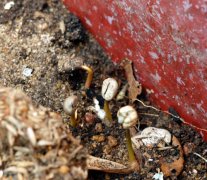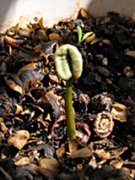Basic knowledge of coffee cultivation basic knowledge of coffee

What is coffee? Coffee is the fruit of a Rubiaceae plant growing about 6000 feet above sea level, distributed on the world's narrow subtropical axis; coffee trees grow green all the year round and can grow up to 20 feet tall, and are generally controlled at 8 to 10 feet for easy harvest. Coffee trees take 3 to 5 years to bear fruit. They first produce small white flowers that resemble jasmine in shape and size. After withering, they produce dark green fruit, then turn yellow, red, and crimson when fully mature. Coffee beans as we know them are seeds sandwiched in crimson fruit.
Coffee harvesting:
As the coffee fruits are really ripe at different times, they are mainly picked manually, and they are picked from the trees one by one.
Coffee processing:
Coffee fruits need to be processed immediately after picking. There are two processing methods, one is sun-drying (also known as drying): lay on the ground for about 12 to 15 days, direct exposure, after drying, remove pulp and bean shells. The nuts obtained by this method are incomplete and tasteless, and they are easy to have miscellaneous flavor due to fermentation in case of rain, but the cost is lower. The other is water washing: it takes only 20 to 24 hours to soak the pulp with water, remove the bean shell and dry it to become a clean green bean kernel, clean and free of miscellaneous smell, fresh and mellow taste, short time required, complete beans and less bad beans, but the cost is higher. After the fresh coffee beans are dried, they are still wrapped in a parchment-like shell, and the coffee beans stored in this form are called "Parchment Coffee" (parchment coffee beans). Remove the parchment overcoat from the coffee beans before export, and then polish and grade them before listing.
The variety of coffee
Coffee beans are mainly divided into three kinds of original beans: Arabica (Arabica), Robusta (Roberta) and Liberica (Liberika). The origin of Arabica coffee is Ethiopia, which accounts for 70% to 80% of the world's coffee production, and almost all the world's famous coffee varieties are Arabica. Roberta coffee originates in Congo, Africa, and accounts for about 20% to 30% of the world's production. But its flavor is more bitter than Arabica, its quality is much lower, and its caffeine content is higher, so it is mostly used to make instant coffee. Liberica coffee, which is produced in Liberia in Africa, accounts for less than 5% of the world's production, and this coffee bean has a very strong aroma and bitter taste.
When it comes to the relationship between coffee and health, there must be "caffeine", which is an important source of coffee bitterness. In fact, caffeine exists not only in coffee beans, but also in tea, chocolate and cola. The effect of caffeine on the human body lasts about 2 to 3 hours. The right amount of caffeine has the effect of refreshing and promoting blood circulation.
The three original species of coffee:
Three original species
1-Arabica (plateau cultivation)
2-Robusta (lowland cultivation)
3-Liberica (minimum cultivation)
Output
1-about 70-80% of world output
2-about 20-30% of the world's total output
3-about 5% of the world's total output
Suitable for cultivation site
1-growing on high 500m-1000m sloping ground, the higher the height, the better the quality.
2-easy to cultivate, growing on a sloping ground below 500m in height.
3-grow in lowlands or flatlands below 200m
Air temperature condition
1-do not adapt to high and low temperatures
2-high temperature resistance
3-resistant to high temperature and low temperature
Rainfall condition
1-do not adapt to more rain and less rain
2-withstand more rain and less rain
3-withstand more rain and less rain
Caffeine content
1-lower (1.1% Muay 1.7%)
2-higher (2% Mel 4%)
3-
Creama content
1-moderate
2-higher
3-
Tree height
About 1-5m
About 2-12m
About 3-18m
Raw bean shape
1-elliptical flat shape
2-rounded short oval
3-the top is sharp and diamond-shaped
Taste
1-good smell
2-lack of aroma, strong bitterness and lack of sour taste
3-bad aroma and strong bitterness
Main producing area
1-Brazil, Colombia, other Central and South American countries, Ethiopia, Angola, Mozambique, Tanzania, Yemen, Kenya, Hawaii, Philippines, India, Indonesia, Papua New Guinea
2-Tropical African countries (Uganda, Madagascar, C ô te d'Ivoire, Togo, Angola, Ghana), Hawaii, India, Indonesia (Java), Trinidad Tobago, Philippines, etc.
3-Liberia, Suriname, Gayana, India, Indonesia, Angola, C ô te d'Ivoire, Philippines, etc.
Important Notice :
前街咖啡 FrontStreet Coffee has moved to new addredd:
FrontStreet Coffee Address: 315,Donghua East Road,GuangZhou
Tel:020 38364473
- Prev

Observation on the growth process of Coffee Bean to Coffee Tree
The bud that has just emerged looks like it is ready to bloom. The seed next to the beginning of the newborn life has already sprouted, two beautiful young leaves, the small bud next to it needs refueling, it will sprout and grow leaves soon. Now the bud is not high, it is estimated to be only five or six centimeters.
- Next

60 days after sowing, coffee seed beans
After 60 days of sowing, the germination period of coffee seed beans after initial radicle germination should be based on the principle of keeping the seedling pot moist. Ideally, in the temperature range of 19-26 ° C and moisture conditions, seeds need 55-60 days from sowing to emergence, with the highest emergence rate at 80 days. Kunming is in the temperature range of 6-25℃ during this period, so the seedling pot is intentionally placed on the sunny windowsill in the house and covered with plastic at night.
Related
- Beginners will see the "Coffee pull flower" guide!
- What is the difference between ice blog purified milk and ordinary milk coffee?
- Why is the Philippines the largest producer of crops in Liberia?
- For coffee extraction, should the fine powder be retained?
- How does extracted espresso fill pressed powder? How much strength does it take to press the powder?
- How to make jasmine cold extract coffee? Is the jasmine + latte good?
- Will this little toy really make the coffee taste better? How does Lily Drip affect coffee extraction?
- Will the action of slapping the filter cup also affect coffee extraction?
- What's the difference between powder-to-water ratio and powder-to-liquid ratio?
- What is the Ethiopian local species? What does it have to do with Heirloom native species?

